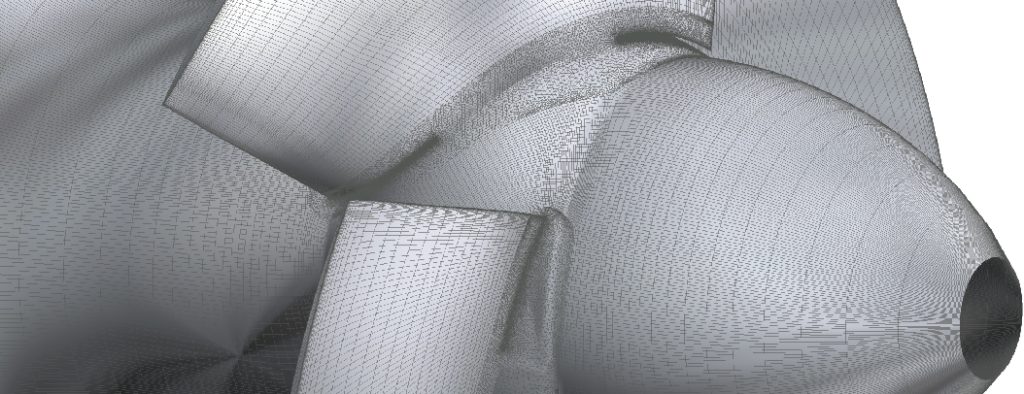- PRODUCTS
- SERVICES
- HARDWARE & IT
- LEARNING & DEVELOPMENT
- CADFEM INFORMS
CADFEM INFORMS OVERVIEW
- ABOUT US



For the electric motor analysis, I was able to achieve conformal mesh with good mesh quality but the mesh count was higher initially. Higher mesh count will consume more solving time & hence I was looking up for options that can help me reduce the mesh count & still preserve the mesh quality. One of the reasons for high mesh count was the proximity settings where the solids were also meshed with a fine sizing to maintain conformal mesh. So, a non-conformal mesh approach was utilized with solids having a bit coarse mesh which provided an advantage to generate a fine mesh to the fluid regions. With fine-mesh confined to the fluid regions, mesh count with a non-conformal approach was reduced to ~60%. But with non-conformal mesh, I had to invest time in assigning the mesh interfaces, which eventually consumed more time as multiple mesh interfaces are involved.



The same model was tried in fluent meshing under the conformal polyhexcore mesh approach, this time with prism boundary layers included. 8 cores were used for parallel meshing which exponentially reduced the meshing time. The mesh count was reduced to 40% compared to the tetrahedral mesh & the mesh quality was within the acceptable limits. For the boundary layer resolution as well, the polyhedral prisms helped in maintaining the quality compared to tetrahedral prisms within narrow air gap regions. Results for the 3 cases were compared & there was a good agreement. So, from this experience, I observed that fluent meshing can help in reducing the pre-processing time to a greater extent & I would highly recommend this approach. In the next part, I will be discussing more regarding various capabilities provided in fluent meshing which will highlight the extent to which fluent meshing can simplify pre-processing work.
In a nutshell, fluent meshing can incorporate any type of geometry, and using the appropriate mesh strategy one can develop high-quality meshes with appreciable ease. Considering the type of complex products being deployed into the market, fluent meshing with wrapping technology and guided workflows is definitely the promising technology to reduce the overall pre-processing effort.


